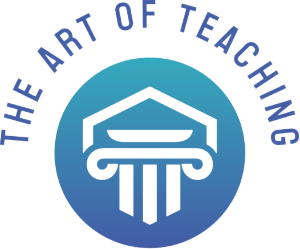
Crafting Future-Ready Education: Insights into Curriculum Design
In a world marked by rapid technological advancements and shifting global dynamics, the need for future-ready education has never been more crucial. As traditional career paths evolve and new opportunities arise, educational systems must adapt to prepare students for a future that’s both dynamic and uncertain. One of the key pillars of shaping effective education is curriculum design. This blog post explores how curriculum design can pave the way for crafting education that equips students with the skills and knowledge they need to thrive in the years to come.
1. Understanding Future-Ready Education:
Future-ready education entails equipping students with the skills, competencies, and mindset to navigate the ever-changing landscape of the modern world. Technological disruptions, shifting job markets, and global challenges necessitate an education that goes beyond rote learning and embraces adaptable thinking. In this context, curriculum design plays a pivotal role in determining what students learn, how they learn it, and how well-prepared they are for the future.
2. Key Principles of Curriculum Design for Future Readiness:
To create a curriculum that’s future-ready, educators must embrace several key principles:
- Flexibility and Adaptability: Curricula should be designed to evolve with the changing needs of the world.
- Interdisciplinary Learning: Fostering connections between subjects encourages holistic understanding and problem-solving.
- Critical Thinking and Problem-Solving: These skills empower students to analyze, synthesize, and innovate.
- Digital Literacy and Technological Skills: A grasp of technology is essential for thriving in a tech-driven society.
- Soft Skills and Emotional Intelligence: Skills like communication, collaboration, and empathy are equally important.
3. Incorporating Technology in Curriculum Design:
Technology isn’t just an accessory in education—it’s a transformative tool. Integrating digital platforms, educational apps, and interactive content can enhance learning experiences and engage students on multiple levels. Virtual labs, online simulations, and video lectures can supplement traditional teaching methods, making education more dynamic and accessible.
4. The Role of Interdisciplinary Learning:
Interdisciplinary learning blurs the lines between subjects, encouraging students to explore connections between seemingly unrelated topics. By engaging in projects that require knowledge from multiple disciplines, students develop holistic problem-solving skills and adaptability. For example, a project on sustainable urban planning might involve elements of biology, economics, and architecture.
5. Balancing Traditional and Modern Subjects:
While modern skills like coding and data analysis are critical, traditional subjects like literature, history, and the arts remain relevant. A holistic education incorporates both, providing students with a well-rounded perspective that fuels creativity and empathy. The STEM and STEAM movements promote the integration of science, technology, engineering, arts, and mathematics to create a more comprehensive learning experience.
6. Nurturing Critical Thinking and Creativity:
In a world inundated with information, the ability to think critically and creatively is paramount. Curriculum designers can foster these skills by incorporating open-ended projects, problem-based learning, and discussions that encourage students to question assumptions and explore diverse viewpoints.
7. Adapting Assessment Methods for Future Readiness:
Traditional exams might not accurately reflect a student’s true capabilities in a future-ready curriculum. Alternative assessment methods, such as project-based assessments, portfolios, and competency evaluations, offer a more comprehensive view of a student’s skills and accomplishments.
8. Building Collaborative and Communication Skills:
In today’s interconnected world, collaboration and effective communication are essential skills. Curriculum design can promote teamwork through group projects, peer reviews, and collaborative learning experiences that mirror real-world scenarios.
9. Ensuring Inclusivity and Diversity in Curriculum Design:
A future-ready curriculum must reflect the diversity of the world students will enter. By incorporating diverse perspectives, cultures, and historical narratives, educators can foster a more inclusive and empathetic generation.
10. Case Studies of Successful Future-Ready Curriculum Implementation:
Examples of institutions that have successfully implemented future-ready curricula showcase the tangible benefits. These institutions emphasize real-world applications, interdisciplinary learning, and technology integration, leading to graduates who are better equipped to navigate the challenges of the modern world.
Takeaway
Curriculum design stands at the crossroads of educational innovation. As we prepare students for a future marked by uncertainty and rapid change, it’s imperative that educators and policymakers collaborate to craft education that’s adaptable, interdisciplinary, and inclusive. By following the principles of future-ready curriculum design, we can ensure that the next generation is equipped with the skills, knowledge, and mindset needed to thrive in an ever-evolving world.


